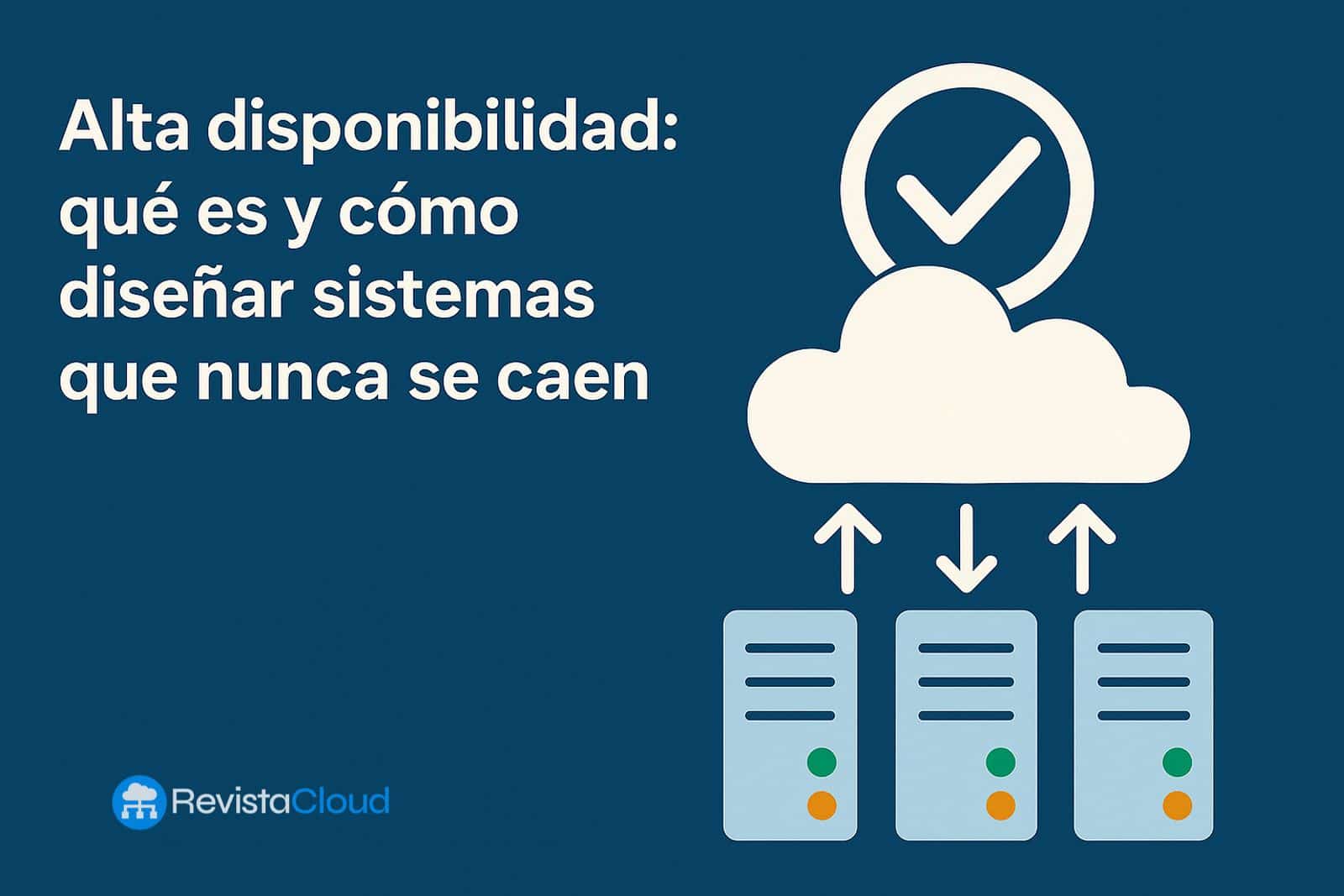Have you ever encountered a “service unavailable” message when trying to access a critical website, app, or platform? In a world where every second counts, a digital service outage is not just an inconvenience: it can have devastating economic, reputational, and operational impacts. This is where the concept of high availability comes into play, a fundamental strategy for keeping systems always accessible.
In this article, we will explain, in a technical yet accessible way, what high availability is, why it is so important, what technologies are used to implement it, and how you can apply it in your infrastructure, whether you work in a startup or a large company.
What is high availability?
High Availability (HA) is the capability of a computer system to continue operating without interruptions for an extended period. Its objective is to minimize downtime even when failures, maintenance, or unexpected traffic spikes occur.
To be considered “high availability,” a system must be designed with redundant components and automatic failure detection and recovery mechanisms. It’s not about preventing failures; rather, when something does fail (and it will), the system should recover automatically, quickly, and without data loss.
Why is it so important?
A service outage can result in:
- Loss of revenue (especially in e-commerce or SaaS).
- Loss of customer trust.
- Legal penalties in regulated sectors (such as finance or healthcare).
- Security breaches.
According to some studies, the average cost of downtime can range from €300,000 to €1,000,000, depending on the sector. And the most serious part: many incidents could have been avoided with the right architecture.
How is high availability measured?
Availability is measured as a percentage of the time a system remains operational. For example:
| Availability Percentage | Downtime per Year | Level of Demand |
|---|---|---|
| 99.9% | ~8.76 hours | Satisfactory for SMEs |
| 99.99% | ~52 minutes | Critical services |
| 99.999% | ~5 minutes | Finance, healthcare |
This last level, known as “five nines,” is the de facto standard for critical infrastructures.
Key principles of a highly available system
- Elimination of single points of failure (SPOF)
Every component should have a replica: servers, databases, networks, power supplies… - Automatic failover
If a node fails, another takes its place without human intervention. - Real-time data replication
To prevent data loss in the event of a disaster. - Constant monitoring
Tools like Prometheus, Grafana, or Zabbix help detect failures before they become critical. - Fault tolerance and fast recovery (low RTO and RPO)
- RTO (Recovery Time Objective): Maximum acceptable time to recover a service.
- RPO (Recovery Point Objective): Maximum amount of data that can be lost (ideally zero).
Components and architecture
🔁 Clustering and load balancing
Clusters are groups of servers acting as a single system. They are typically organized into two types:
- Active-passive: one works, the other waits to assume the role if the first fails.
- Active-active: all nodes process traffic, improving performance and availability.
Load balancers (such as HAProxy, Nginx, or cloud solutions like ELB on AWS) distribute traffic among cluster nodes, ensuring balance and failover.
🗄️ Replicated storage
Systems such as Ceph, GlusterFS, or distributed databases (MariaDB Galera, CockroachDB, Cassandra) maintain data integrity even in distributed environments.
☁️ Cloud and multi-zone infrastructure
Platforms like AWS, Azure, or GCP facilitate high availability through:
- Regions and availability zones.
- Automatic scaling.
- Geographic redundancy.
You can also opt for a hybrid strategy that combines cloud and on-premise elements.
High availability vs. disaster recovery
| Concept | High Availability | Disaster Recovery |
|---|---|---|
| Focus | Prevention of interruptions | Restoration after interruptions |
| Response Time | In real-time | Minutes to hours |
| Example | Server failure covered by another | Recovery after data center fire |
| Key Technology | Clustering, failover, replication | Backups, DRP, mirror sites |
Having both strategies is essential.
Best practices for implementing HA
✅ Design for failure from day one
✅ Eliminate SPOFs at every layer of the stack
✅ Automate as much as you can
✅ Replicate data and synchronize in real-time
✅ Regularly test your failover system
✅ Document your architecture and action protocols
✅ Keep all components updated
✅ Scale horizontally to handle traffic spikes
✅ Use proactive monitoring and real-time alerts
Conclusion
High availability is not a luxury: it is a strategic necessity. It doesn’t matter the size of your infrastructure or your budget. There are scalable solutions that allow you to enhance your resilience today.
Investing in HA is protecting your business, your reputation, and your operational continuity. And in a digital environment where competition is just a click away, reliability becomes a competitive advantage.
Is your infrastructure prepared to never fail?

